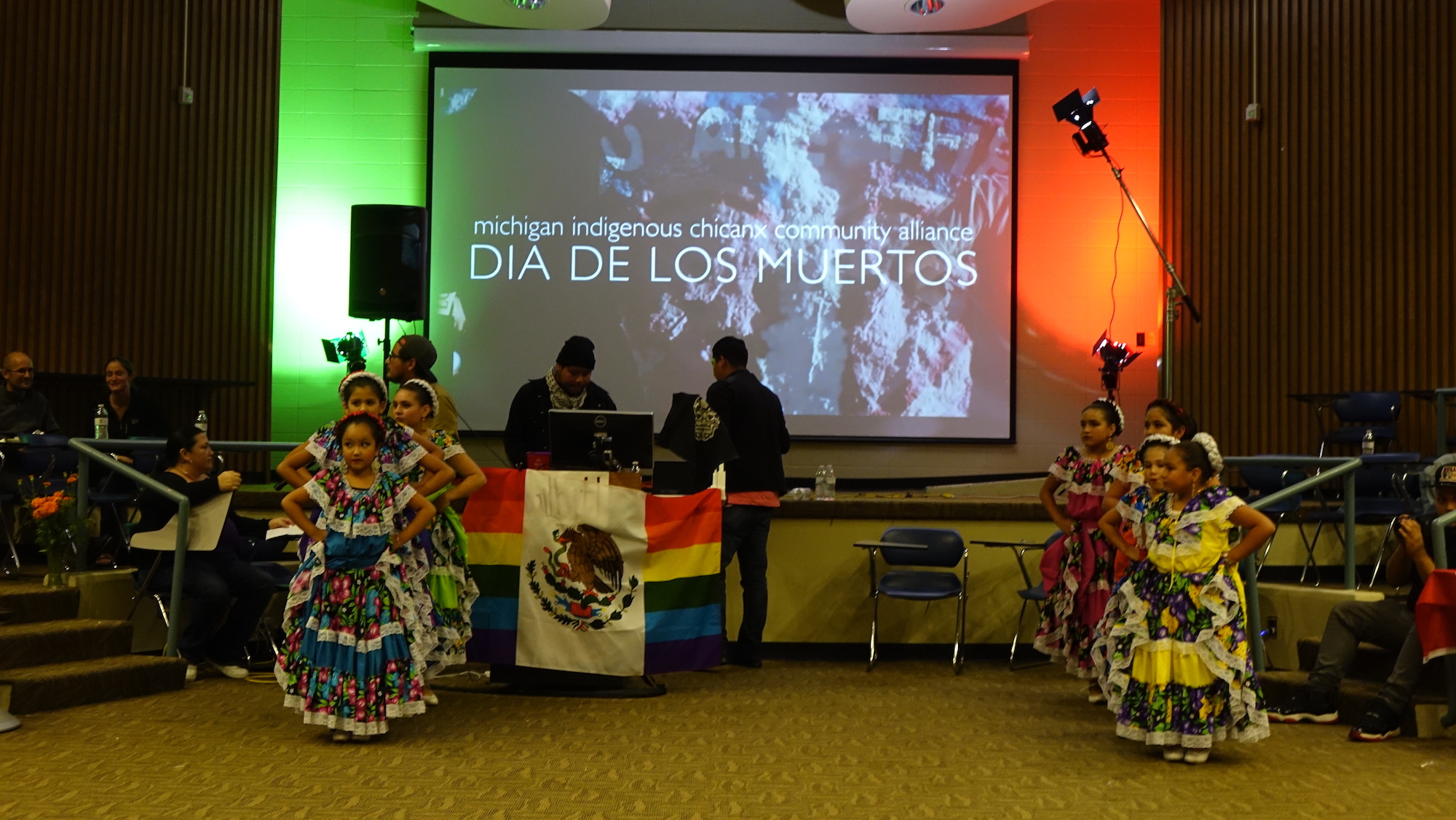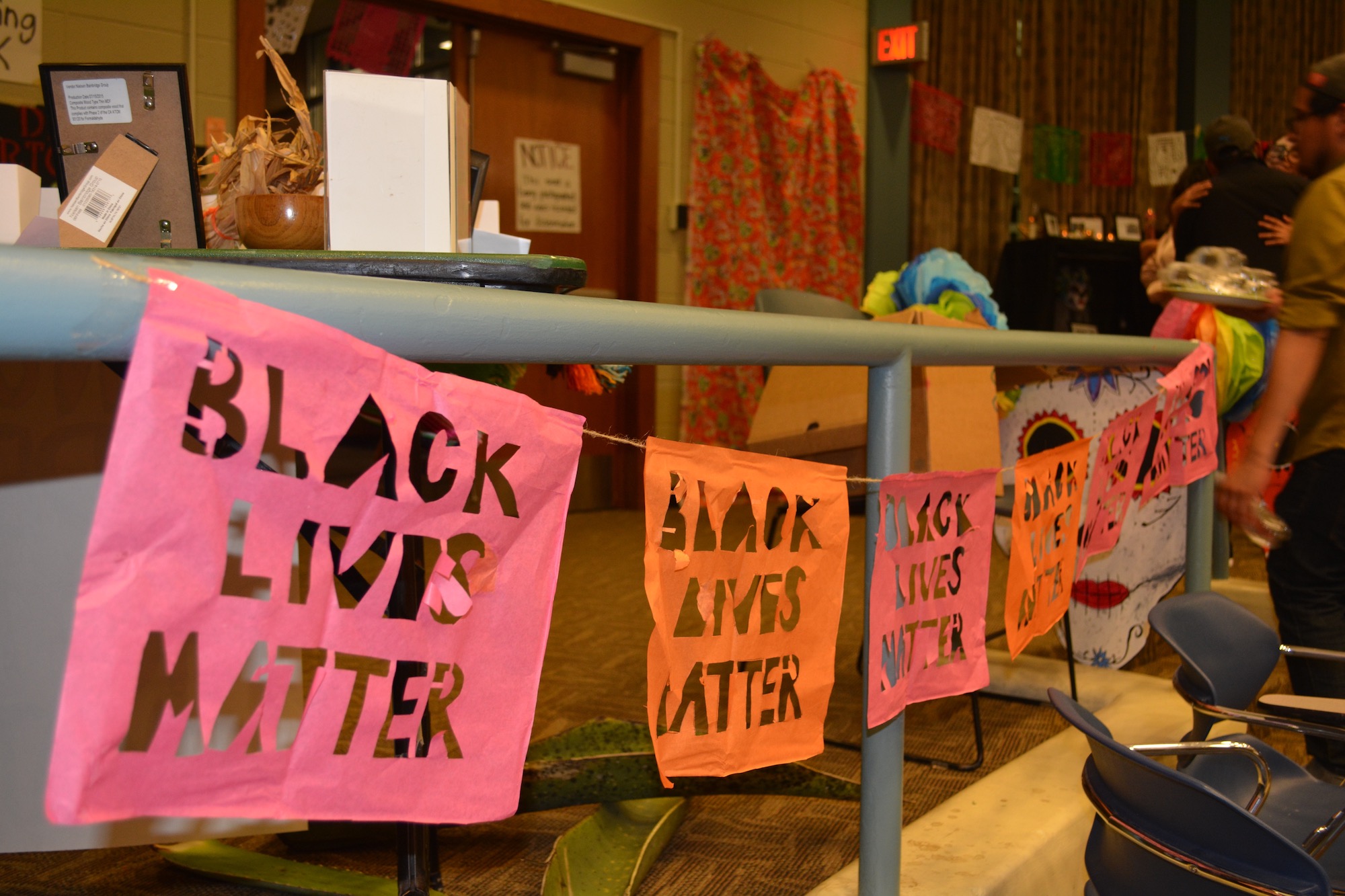

It’s not uncommon to hear people refer to El Día de los Muertos as a “hybrid” of Catholic and Indigenous traditions. After all, it is often celebrated in accordance with the Catholic calendar on November 1 and 2, and use of Catholic symbols and prayer are also frequent.
However, simply referring to this time of year as a “hybrid” of pre-Columbian and European traditions glosses over the holiday’s violent history. The reason El Día de los Muertos is now celebrated over two days in early November is not because of a reciprocal and peaceful cultural exchange between distinct ethnic groups. Rather, it is the result of strategic attempts by European colonizers to eradicate Indigenous spirituality altogether. Historically, many of the pre-Columbian festivals from which El Día de los Muertos descends were carried out over the course of weeks (many communities still practice this way). Colonizers realized that it would be impossible to totally remove these festivals because they were too deeply embedded within Indigenous cultures for Indigenous people to be coerced into giving them up completely. The best colonizers could do was to contain the holiday by confining it to two days.
Calling El Día de los Muertos a “hybrid,” then, runs the risk of giving the wrong impression about its historical formation and its contemporary significance. The holiday is best understood within the context of ethnocide and is best seen as the result of Indigenous resistance to 500 years of colonialism. El Día de los Muertos is not a mere mixture of Indigenous and Spanish traditions, but an example of how Indigenous peoples “accepted Christianity into their cosmovision for purposes of cultural survival,” as Roberto Cintli Rodríguez has written.


This is not to shame those who incorporate Catholicism into their practices, but to serve as a reminder that what we have today was fought for by our ancestors who came before—sometimes by taking up arms, and other times by adapting to the circumstances they were faced with. As a time of communion for the living and the dead, El Día de los Muertos is an excellent opportunity to honor these struggles by making offerings to the ones who lived through them.
Through this kind of active remembering, it is possible build better futures for the next generations as well. Cherríe Moraga writes, “I am in daily search of these acts of remembering of who we once were, because I believe they will save our pueblos from extinction. Our preconquest imaginations offer strategies for building self-sustaining societies today, societies that can disrupt the mass suicide of global consumption, engineered by the empire of the United States… So, I write.”
Every community practices El Día de los Muertos differently, but how we talk about those practices (and their histories) matters greatly. Reducing this time of year to a “hybrid” of Spanish and Indigenous practices tends to de-politicize it in a way that erases that which our ancestors fought so hard carry forward.
***
Santos Felipe Ramos is a Xicano/Irish teacher, researcher, and community organizer living and working in the territory of the People of the Three Fires—the Ojibwe, Potawatomi, and the Odawa. Follow him on IG and Twitter @Tos_Ram.


